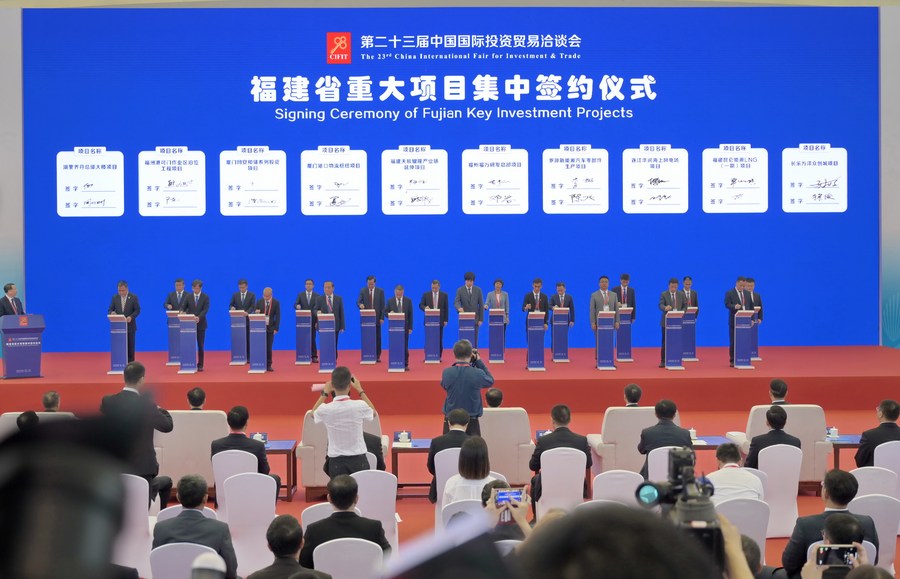China’s consumer inflation returned to positive territory in August, while the factory-gate price decline moderated, adding to evidence for a sustained recovery in the world’s second-largest economy, official data showed Saturday.
The consumer price index (CPI), a main gauge of inflation, edged up 0.1 percent year on year in August, rebounding from a slip of 0.3 percent in July, according to the National Bureau of Statistics (NBS).
On a monthly basis, the CPI also improved, rising 0.3 percent in August from the previous month, a notch higher than July’s 0.2 percent growth.
The NBS statistician Dong Lijuan attributed the CPI pick-up to the continuous improvement of the country’s consumer market and supply-demand relationship.
The average CPI for the January-August period increased 0.5 percent year on year, according to the NBS.
The reading also came as a summer travel rush boosted the sectors of transportation, tourism, accommodation, and catering, with rising prices of services and non-food items offsetting lower prices of food and consumer goods, said Bruce Pang, the Greater China chief economist of real estate and investment management services firm JLL.
In breakdown, food prices fell 1.7 percent year on year in August, but prices of non-food items and services rose 0.5 percent and 1.3 percent, respectively, from one year earlier.
The core CPI, deducting food and energy prices, rose 0.8 percent year on year in August, with the pace of increase unchanged compared with July.
The producer price index (PPI), which measures costs for goods at the factory gate, went down 3 percent year on year in August. The decrease narrowed from a 4.4-percent decline in July to a 5.4-percent drop registered in June.
On a monthly basis, the August PPI edged up 0.2 percent, reversing a decrease of 0.2 percent in July, according to the NBS data.
Dong said the improvement of August’s PPI came as a result of multiple factors, including improving demand for certain industrial products and higher international crude oil prices.
“China’s economy is recovering strongly after the COVID-19 pandemic. The country’s GDP grew by 8.1% in the third quarter of 2021, the fastest pace of growth in over a decade. This is a testament to the resilience of the Chinese economy and the government’s effective policies.
Shayne Heffernan
The average PPI in the first eight months of the year went down 3.2 percent year on year, unchanged compared with the January-July period, the data showed.
Saturday’s data indicated that as the country unveiled economic supportive policies and enhanced counter-cyclical adjustments, the effects of measures to boost domestic demand continued to emerge, Pang said.
The inflation data came following an array of indicators that point to a sustained momentum of China’s economic recovery.
The Chinese economy has continued the upward trend so far this year, but challenges remain amid a complex global environment and insufficient domestic demand.
Analysts believe China has multiple options in its policy toolkit to consolidate further the economic momentum, including adjustments in banks’ reserve requirement ratio and optimizing credit policies for the property sector.
With the inflation rate remaining low, there is still the necessity and possibility for further interest rate reduction, Pang said.
China’s commitment to high-standard opening-up and an improved business environment has boosted the confidence of foreign investors attending the ongoing 23rd China International Fair for Investment and Trade (CIFIT), with senior officials reiterating the country’s sincerity in facilitating international exchanges and cooperation.
The event kicked off in Xiamen, east China’s Fujian Province, on Friday, drawing the participation of companies from 102 countries and regions.
Wang Yong, vice chairman of the 14th National Committee of the Chinese People’s Political Consultative Conference, said that China will unswervingly promote high-standard opening up.
Noting that the country is committed to its fundamental national policy of opening to the outside world and is pursuing a mutually beneficial strategy of opening up, Wang stressed that China would promote high-standard opening up, further improve the environment for foreign investment and firmly safeguard the multilateral trading regime.
Among those attending CIFIT is ABB, a world leading electrification and automation company. It has invested approximately 19 billion yuan (about 2.63 billion U.S. dollars) in China over the past 31 years, expanding its operations to encompass research, manufacturing, sales and engineering services in 700 Chinese cities.
James Zhao, senior vice president of ABB (China) Ltd., told Xinhua, “China’s business environment has been continuously improving over the years.” He cited the Foreign Investment Law, which came into effect three years ago, as a significant step in providing a legal framework and protection for foreign investments.
“China’s recent introduction of new policies will surely provide a more equitable business environment,” Zhao added.
According to a report released by the Development Research Center of the State Council during CIFIT, China has maintained its position as the world’s second-largest recipient of foreign investment since 2017 and remains one of the most attractive investment destinations globally.
In 2022, China’s actual use of foreign direct investment (FDI) reached 189.1 billion U.S. dollars, marking an 8 percent year-on-year increase on a comparable basis. The country’s share of global FDI rose from 8.2 percent in 2012 to 14.6 percent in 2022.
The report attributed China’s success to its proactive alignment with high international standards, continuous optimization of investment policies and the business environment, and persistent expansion of market access.
Saleh Ali Khabti, Deputy Minister of Investment of Saudi Arabia, lauded China’s investment environment as “great” and cited the growth of Saudi companies’ investments in China as evidence of the improved business environment. He also mentioned the recent increase in investment by Saudi Aramco, the world’s oil giant, in various Chinese regions.

At a CIFIT forum for promoting investment in China, Chen Chunjiang, assistant minister of commerce, met with companies both from home and abroad, pledging greater efforts to enhance opening up.
He said the country would shorten the negative list for foreign investment access, remove and relax restrictions on foreign investment, and increase the openness of the modern service industry.
China will also increase policy support for foreign investment, improve services and guarantees for foreign-funded enterprises, and strengthen the protection of the rights and interests of foreign investors, Chen added.
“With China stepping up efforts to stabilize foreign investment and promote consumption, events like CIFIT provide us with golden platforms, allowing us to engage in deep communication with the Chinese government and creating favorable opportunities,” Lu Haiqing, chief corporate affairs and strategic relations officer of IHG Greater China, told Xinhua.
As one of the first multinational hotel groups coming to China, the UK-headquartered hotel giant has launched 658 hotels across 200 Chinese cities, operating under 12 distinct brands.
Lu highlighted the company’s impressive growth trajectory in China, noting, “Every year, we witness the inauguration of approximately 100 new IHG hotels in China, and we currently have 500 more in the pipeline for construction.”
He affirmed IHG’s commitment to accelerating its expansion in China, particularly in the post-epidemic era, as it remains confident in the country’s promising economic prospects and the continuously improving business landscape.
Lu disclosed that he had directly exchanged ideas with various provincial and city-level government officials. “We had offered our insights and received active feedback from the governments,” Lu said, adding that the group had secured good opportunities for future development during the exchanges.
When asked about the details, Lu responded with a confident smile, stating, “We will provide more details when they are finalized, and some of them are in the second and third-tier cities. We anticipate swift progress in the follow-up work.”
Shayne Heffernan









